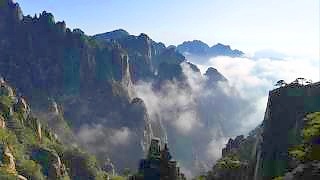![No video in this post. At BB, we think this is something crucial to well-being and we`ll do our best to convey our experience ... The most important point is - don`t imagine that you can `fix` things - at the start, one needs 3 or 4 meetings to relax and know someone - but beyond that, if things are not going well, get out early; one cannot `fix` incompatibility, and certainly not a narcissist (they kind of know that they are wacko, but will never, ever admit it). `Love` shouldn`t require a lot of work; a bit maybe; but if one senses that it is all `one way`, or not going anywhere, quit. The relationship is very unlikely to get better; it almost certainly will get worse. Doomed. Save yourself years of wasted life. If you don`t, expect to become bitter and twisted yourself. At BB, we feel that health is THE foundation to all else, so we do cover health in this regard, although primarily a travel and culture site. Thousand page books are not our thing; we get straight to the point. If you want to delve deeper, consider this - why is a relationship so important to you ? Going beyond `animal instincts` is beyond many - they never really mature. If the immature instinct is made the `gold standard`, what can one expect ? If one cannot go beyond the animal brain, one is f****d [animal brain lingo]. The thing is, bad relationships that progress to having kids, can produce sad / bad kids (that may have to endure two decades of emotional abuse). And likely to repeat the cycle, and possibly go into politics, etc. - hence, it is very important to not be a part of this. Maybe, romantic `love` is simply the grand distraction meme that helps keep the elite in power. Relationships not going well – BB’s take – quit early](https://www.beijingbuzzz.com/choral3.jpg)
|
No video in this post. At BB, we think this is something crucial to well-being and we'll do our best to convey our experience ...
The most important point is - don't imagine that you can 'fix' things - at the start, one needs 3 or 4 meetings to relax and know someone - but beyond that, if things are not going well, get out early; one cannot 'fix' incompatibility, and certainly not a narcissist (they kind of know that they are wacko, but will never, ever admit it). 'Love' shouldn't require a lot of work; a bit maybe; but if one senses that it is all 'one way', or not going anywhere, quit. The relationship is very unlikely to get better; it almost certainly will get worse. Doomed. Save yourself years of wasted life. If you don't, expect to become bitter and twisted yourself.
At BB, we feel that health is THE foundation to all else, so we do cover health in this regard, although primarily a travel and culture site.
Thousand page books are not our thing; we get straight to the point.
If you want to delve deeper, consider this - why is a relationship so important to you ? Going beyond 'animal instincts' is beyond many - they never really mature. If the immature instinct is made the 'gold standard', what can one expect ? If one cannot go beyond the animal brain, one is f****d [animal brain lingo].
The thing is, bad relationships that progress to having kids, can produce sad / bad kids (that may have to endure two decades of emotional abuse). And likely to repeat the cycle, and possibly go into politics, etc. - hence, it is very important to not be a part of this.
Maybe, romantic 'love' is simply the grand distraction meme that helps keep the elite in power.
|
 A month in China : Beautiful Natural Landscapes : tour suggestion from BeiJingBuzzz
A month in China : Beautiful Natural Landscapes : tour suggestion from BeiJingBuzzz






![[videogallery type=playlist id=PLAhTBeRe8IhNCSe4R-NvrFnrgJvE6jql8] Something different – on the universe / space](https://img.youtube.com/vi/W62aVty77Lw/mqdefault.jpg)
![No video in this post. At BB, we think this is something crucial to well-being and we`ll do our best to convey our experience ... The most important point is - don`t imagine that you can `fix` things - at the start, one needs 3 or 4 meetings to relax and know someone - but beyond that, if things are not going well, get out early; one cannot `fix` incompatibility, and certainly not a narcissist (they kind of know that they are wacko, but will never, ever admit it). `Love` shouldn`t require a lot of work; a bit maybe; but if one senses that it is all `one way`, or not going anywhere, quit. The relationship is very unlikely to get better; it almost certainly will get worse. Doomed. Save yourself years of wasted life. If you don`t, expect to become bitter and twisted yourself. At BB, we feel that health is THE foundation to all else, so we do cover health in this regard, although primarily a travel and culture site. Thousand page books are not our thing; we get straight to the point. If you want to delve deeper, consider this - why is a relationship so important to you ? Going beyond `animal instincts` is beyond many - they never really mature. If the immature instinct is made the `gold standard`, what can one expect ? If one cannot go beyond the animal brain, one is f****d [animal brain lingo]. The thing is, bad relationships that progress to having kids, can produce sad / bad kids (that may have to endure two decades of emotional abuse). And likely to repeat the cycle, and possibly go into politics, etc. - hence, it is very important to not be a part of this. Maybe, romantic `love` is simply the grand distraction meme that helps keep the elite in power. Relationships not going well – BB’s take – quit early](https://www.beijingbuzzz.com/choral3.jpg)


